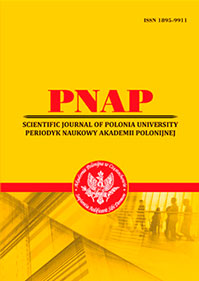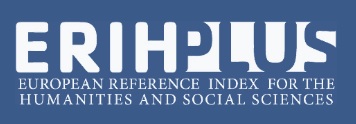КОМУНІКАТИВНО-СИТУАТИВНІ ПАРАМЕТРИ ВЖИВАННЯ АФЕКТОНІМІВ
Анотація
У статті здійснено аналіз особливостей уживання афектонімів – звертань з іманентним позитивно-оцінним емоційним забарвленням на зразок квіточко, зіронько, коханий, такі номінації наділені певним магнетизмом, вони ніколи не залишаються поза увагою адресата. З-поміж усіх можливих звертань досліджувані одиниці вирізняються чи не найбільшим регулятивним потенціалом, їм притаманна яскраво виражена спрямованість на співрозмовника. Афектоніми впливають насамперед на чуттєву сферу адресата, яку за допомогою таких номінацій схиляють зазвичай у бік позитиву та вдоволення. У дослідженні представлено ядерні й периферійні ознаки функціювання ласкавих звертань у контексті аналізу основних компонентів комунікативного процесу, виокремлених свого часу Г. Лассвеллом та Р. Бреддоком. Афектоніми – це одиниці з виразним прагматичним зарядом, тож їх опис передбачає обов’язкове залучення таких комунікативно-ситуативних чинників уживання: хто говорить, кому, з якою метою, як саме, за яких умов і з яким ефектом? У цьому плані релевантною постає характеристика соціальних рис комунікантів, котрі послуговуються зазначеними номінаціями, їхніх інтенцій, способу, сфери використання ласкавих звертань і перлокутивного ефекту, який стимулюють досліджувані апелятиви. Відповідно до вказаних параметрів, особливості функціювання таких одиниць репрезентовано у вигляді опозицій, перша з яких розкриває ядерні ознаки, друга – периферійні: а) за кількістю комунікантів: характерні для міжособистісного спілкування – для групової, масової комунікації; б) за інтерперсональними стосунками співрозмовників: уживаються між близькими людьми (закоханими, подружніми парами, батьками й дітьми, родичами, друзями) – використовуються між знайомими, незнайомими; в) за стратегіями: реалізують кооперативну стратегію – кооперативно- конфронтативну, конфронтативну стратегії; г) за способом уживання: застосовуються безпосередньо – опосередковано; звертання до адресата постійно змінюються – за адресатом закріплюється певний афектонім з можливим варіюванням; д) за сферою спілкування: притаманні приватній комунікації – публічній; е) за ефектом: зумовлюють позитивний перлокутивний ефект – провокують негативний перлокутивний ефект.
Посилання
2. Тургаев А.С., Хренов А.Е. Политология в схемах и комментариях. URL: http://uchebnikonline.com/soderzhanie/textbook_267.html (дата обращения: 12.04.2015).
3. Формановская Н.И. Социально-культурная сущность речевого этикета. Московский лингвистический журнал. 2003. Т. 7. № 2. С. 9–20.
4. Трофимова Н.А. Обращение как оператор порождения реляционного смысла. Homo Loquens: актуальные вопросы лингвистики и методики преподавания иностранных языков. Санкт-Петербург, 2010. Вып. 2. С. 92–100.
5. Кронгауз М.А. Обращение как способ моделирования коммуникативного пространства. Логический анализ языка. Образ человека в культуре и языке. Москва, 1999. С. 124–134.
6. Корнійко І.В. Звертання як динамічний засіб вираження зверненості мовлення (на матеріалі сучасної німецької мови) : дис. … канд. філол. наук : 10.02.04. Київ, 2000. 186 с.
7. Липатова М.К. Обращение как средство выражения эмоциональной оценки в современном французском языке : дисс. … канд. филол. наук : 10.02.05. Ленинград, 1984. 180 с.
8. Карасик В.И. Язык социального статуса. Москва : Институт языкознания АН СССР, Волгоградский педагогический институт, 1991. 495 с.
9. Журавльова Н.М. Поетика української епістолярної ввічливості ХІХ – початку ХХ століття : монографія. Запоріжжя, 2012. 548 с.
10. Селіванова О. Сучасна лінгвістика : термінологічна енциклопедія. Полтава : Довкілля-К, 2006. 716 с.
11. Ренц Т.Г. Романтическое общение в коммуникативно-семиотическом аспекте : автореф. дисс. … докт. филол. наук : 10.02.19. Волгоград, 2011. 42 с.
12. Стернин И.А. Системное значение как обобщение контекстуального употребления слова. Функционирование языковых единиц в контексте : сборник науч. трудов. Воронеж. гос. ун-та. Воронеж, 1978. С. 16–19.
13. Арутюнова Н. Д. Фактор адресата. Известия АН СССР. Серия «Литература и язык». 1981. Т. 40. № 4. С. 356–367.
 ISSN
ISSN 


.png)



